Reviews
Agnès Varda
France, 2004
Credits
Review by Rumsey Taylor
Posted on 10 August 2010
Source MUBI.com
Categories Viva Varda: The Films of Agnès Varda
Agnès Varda’s Cinévardaphoto is a triptych of three of her short films, Salut les cubains, Ulysse, and Ydessa, the Bears and etc…. Note that each is distanced from one adjacent by an average minimum of two decades - the films were completed in 1963, 1982, and 2004, respectively - and roughly span the duration of Varda’s career as a filmmaker. Each of these films is considered singularly below, and together they proffer a certain juxtaposition, broadly expressing Varda’s formal training as a photographer. Bridging the gap between Varda’s two mediums, Cinévardaphoto presents her finally as a curator of her own work.
The first film, Salut les cubains, is intent on capturing a period in Cuban history in an array of documentary photographs (hundreds if not thousands of them are featured therein), but the latter two share more concentrated intentions. The second, Ulysse, considers a single photograph and its subjects’ evaluations of it some thirty years after the fact, and the third, Ydessa, considers an exhibition of uniformly composed portraits of people with teddy bears.
These three films are ordered chronologically, but this chronology is deceptive: the photograph in Ulysse, for example, was taken before the events of Salut les cubains. Nonetheless, they make up a thematic arc; the first film was made with contemporaneous photographs, and the final with antique ones. Each successive film has an older subject, in other words, and Varda’s arrangement of them here evidences a curatorial tendency to remember, contextualize, and ultimately preserve the past.
Salut les cubains Hi There, Cubanos, 1963
Salut les cubains is constituted from thousands of photographs Varda took in Cuba just after Fidel Castro became the country’s Prime Minister in 1959. Often these photos are conceived in a manner that approximates movement—we see Cuban singer Benny Moré dancing in a series of photographs that emulate the melody of his song, and later an impromptu cha-cha-cha that concludes the film. These sequences demonstrate the film’s playfulness, and advance Varda’s evolution into a movie maker.
This film seems to favor the pockets of happiness Varda finds in Cuba. Her subjects, many of them artists of some sort, are typically smiling, and are summarized in kind generalizations in the narration: the men all have beards and cigars, the women are humble and beautiful. It is of note that there is no hostility or unrest. This is a country whose freedom was brand new, once the dust of a revolution began to settle. You get the impression that the smiles strewn throughout so many of the photographs were earned only after a great deal of effort.
Unlike the remaining two films in this triptych, Salut les cubains - however sympathetic its position to its subjects - isn’t about the photographs it contains in as much as it is about their subjects. The photographs are shown rapidly, often in the context of a larger montage. The film has much cinematographic rhythm (portions of it resemble animated still photography), and Varda perseveres in this rhythm throughout, resisting the opportunity to more closely consider the images in isolation.
Ulysse 1982
In 1954 Varda took a photo on a pebbled beach of a deceased goat, a naked child, and a naked man. The three figures, scattered from the lower-right to upper-left of the composition, are open to much interpretation, absent knowledge of the photograph’s original context. What is and isn’t staged? How did the goat die? Just why, precisely, is everyone naked?
Ulysse, in a brief twenty-two minutes, considers each of these questions open-endedly, as Varda hesitates to domineer a singular interpretation of her work. She instead approaches the subjects themselves (including a stand-in for the goat, assuming the role of its potential ancestor) and queries them about their responses to and memories of the work. The older man in the photo, an Egyptian, is found some twenty-eight years later, and he is still nude. He remembers the photograph but not the circumstances — Varda produces the photo and a handful of the beach’s pebbles to jog his memory. The boy, now much older and with a family of his own, remembers less about the photo. His family shared a courtyard with Varda at the time of its making, and she often used them as subjects for her photographs; he appears in many of them, as does his mother. The stand-in goat, finally, considers the photograph silently for a moment, before chewing it up. Varda deems this “eatingimagination” — the manner by which the goat sensorially processes the past.
Varda will offer her own interpretation afterwards, one more reliable and considered than the others, but she is careful to emphasize the _un_interpretability of art. There is a poignant moment in which she allows some children to consider the photograph, and their observations are impressively pure, oblivious to its aspects of fiction: they see truth where the others — even the goat — do not.
Ydessa, the Bears and etc… 2004
A solemn, bewitching figure in an empty white room, the Ydessa of the title stares back at us from the gallery space she has curated. Her hair is long and abnormally red, against which her blue eyes provide a great contrast. The composition pauses on her face, which capably displays her age, then her necklace, a brass teddy bear, and finally her hands, clasped together, ornamented in an array of silver rings. Ydessa would be an impressive visual presence in almost any context, and here, in this empty white room, she is herself rendered an objet d’art, which Varda’s camera considers from a variety of angles before retreating into an adjacent room.
Ydessa will describe herself as a collector, which is but one title she assumes as the curator/installer of an exhibition of photographs of teddy bears. The white room in which she’s formally introduced is one of her exhibit’s architected dead ends: they stem from two rooms that are totally overcome with framed antique photographs. All of them contain bears, and most of them are staged portraits. Closeups of these are featured throughout the film, and the variety is impressive. (My favorite is of a trio of young men with rifles trained on two teddy bears oriented compositionally as if they’re trying to escape.) Ydessa maintains, her face relaying this information experientially, that teddy bear photos are very hard to find. Many of her more remarkable findings are relayed, such as the purchase of two particular bears she had seen in a photograph decades prior.
Just as Cinévardaphoto collects Varda’s own photographic treasures, Ydessa’s exhibit amounts to the sum total of her findings. “It’s so full,” Varda narrates, “that it makes you long for emptiness.” This emptiness is provided in one of the aforementioned dead-ends. One of these in particular is so alarming that it immediately coerces its patrons back into the previous room, overstuffed with bear photos. This action allows us some understanding of what Ydessa has done, an appreciation of the teddy bear as an image of tenderness. When we learn that her family has survived the Holocaust, this observation becomes especially relevant.
At two points Varda inserts herself into the film: first, by way of an old photograph of herself as a girl with a large bow in her hair, and second by segueing into an old book she remembers, entitled “Otto: The Autobiography of a Teddy Bear.” It tells the story of a toy bear that is shared between two young boys, one of whom is Jewish and is later collected for a concentration camp. The bear in this story becomes an improbably durable icon of hope: it survives the war, and reunites the boys at the end. Varda’s sensibility here is somewhat akin to Werner Herzog’s, with his notorious tendency to feature himself in his nonfiction films, but here her appearance is both welcome and appropriate. By doing so, she asserts herself as a necessarily partial transcriber of the material, relaying Ydessa’s story with the right amount of distance, sympathy, and interpretation.
More Viva Varda: The Films of Agnès Varda
-
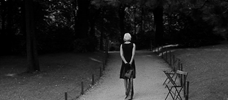
Cléo from 5 to 7
1962 -
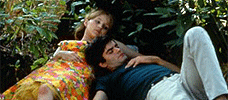
Le Bonheur
1964 -
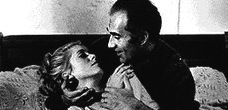
Les Créatures
1966 -
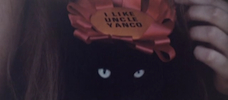
Uncle Yanco
1967 -
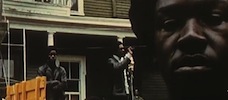
Black Panthers
1968 -
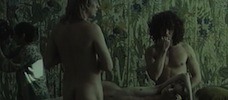
Lions Love
1969 -
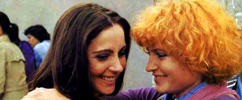
One Sings, the Other Doesn’t
1977 -
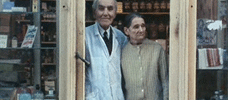
Daguerréotypes
1976 -
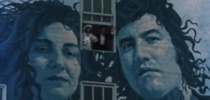
Mur murs
1981 -
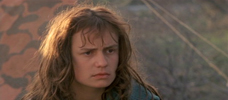
Vagabond
1985 -
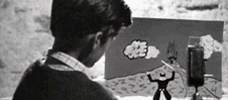
Jacquot de Nantes
1991 -
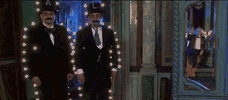
One Hundred and One Nights of Simon Cinéma
1995 -
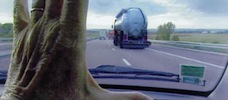
The Gleaners and I
2000 -
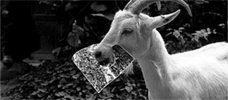
Cinévardaphoto
2004 -
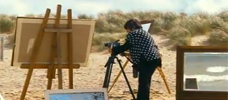
The Beaches of Agnès
2008
We don’t do comments anymore, but you may contact us here or find us on Twitter or Facebook.



